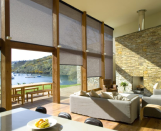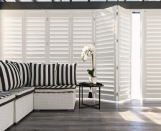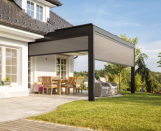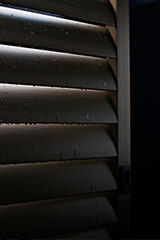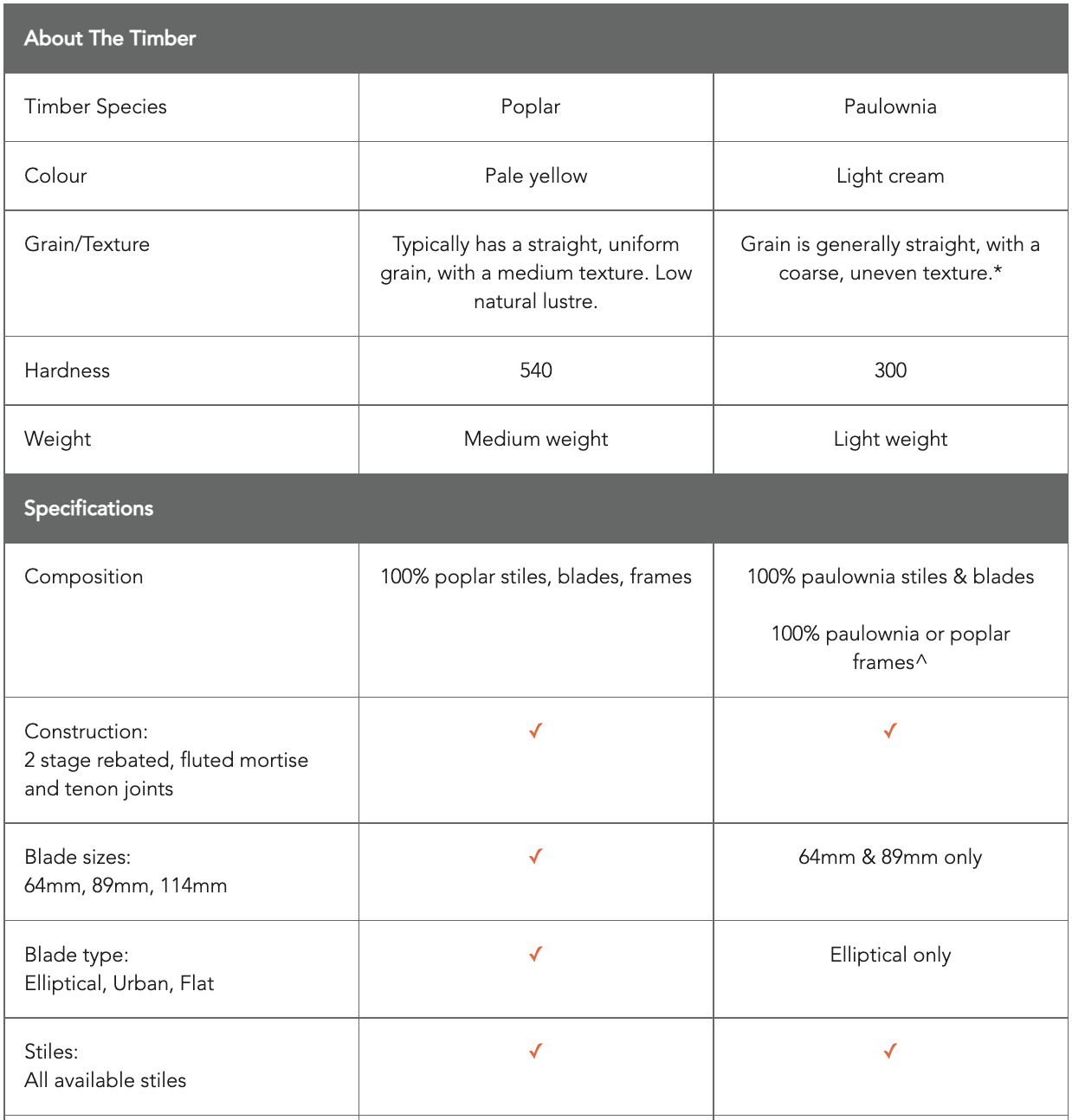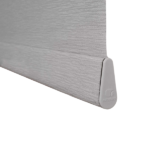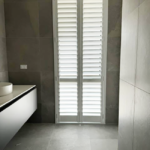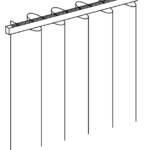Since we released Paulownia as an alternative painted shutter to Poplar, there have been questions about which is the better shutter – Poplar or Paulownia.
The short and simple answer is that both shutters are identical in their performance and appearance. However, with Paulownia offered at a lower price, we think it’s a win-win selling Paulownia – same quality, better price, more margin for you.
Below is a comparison table. For more information, please get in touch with your TWO Account Manager.
About The Timber |
||
Timber Species |
Poplar |
Paulownia |
Colour |
Pale yellow |
Light cream |
Grain/Texture |
Typically has a straight, uniform grain, with a medium texture. Low natural lustre. |
Grain is generally straight, with a coarse, uneven texture.* |
Hardness |
540 |
300 |
Weight |
Medium weight |
Light weight |
Specifications |
||
Composition |
100% poplar stiles, blades, frames |
100% paulownia stiles, blades, frames |
Construction: |
✓ |
✓ |
Blade sizes: |
✓ |
✓ |
Blade type: |
✓ |
Elliptical only |
Stiles: |
✓ |
✓ |
Frames: |
✓ |
✓ |
Installations: |
✓ |
✓ |
Control Rods: |
✓ |
✓ |
Colours & Finish: |
✓ |
✓ |
Shapes |
✓ |
✓ |
Extras: |
✓ |
✓ |
Warranty |
||
Warranty Limits: |
✓ |
✓ |
25 years structural |
✓ |
✓ |
5 years paint |
✓ |
✓ |
5 years custom |
✓ |
✓ |
3 years hardware |
✓ |
✓ |
Other Comments |
||
Finish |
There is very little to no visual difference between the two timber shutters. |
|
Timber Availability |
Paulownia is one of the fastest growing trees in the world, capable of growth rates of well over 2m per year as a seedling. |
|
Price Point |
Paulownia is offered at a lower price than Poplar. |
|
* To attain a smooth, even paint finish, the paint process has been amended to accommodate the uneven texture of Paulownia.


